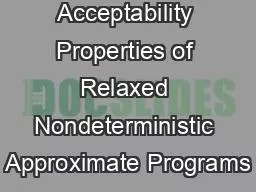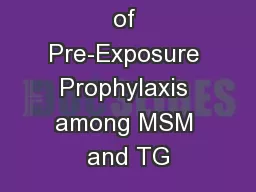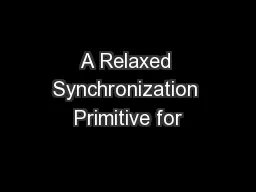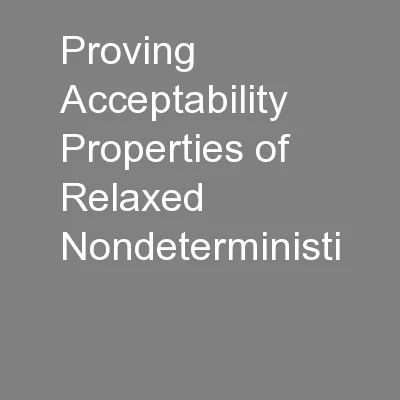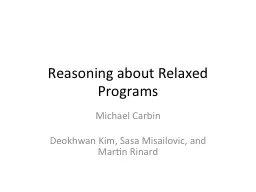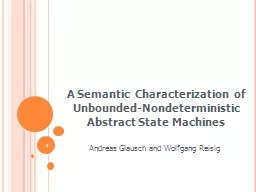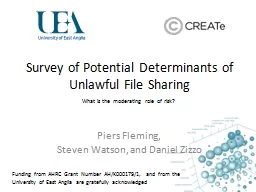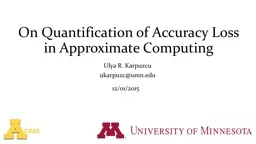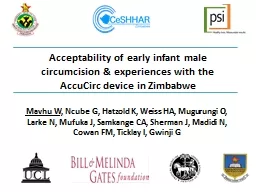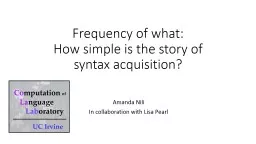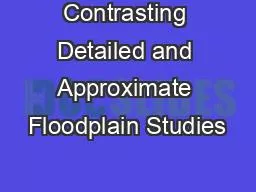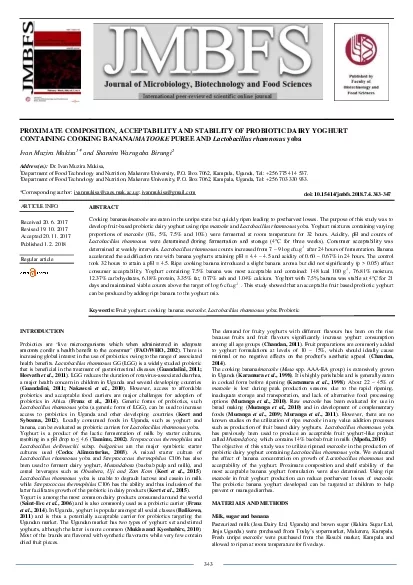PPT-Proving Acceptability Properties of Relaxed Nondeterministic Approximate Programs
Author : frogspyder | Published Date : 2020-10-22
Michael Carbin Deokhwan Kim Sasa Misailovic and Martin C Rinard Approximate Computing Media Processing Machine Learning Search Solution Space Accuracy versus
Presentation Embed Code
Download Presentation
Download Presentation The PPT/PDF document "Proving Acceptability Properties of Rela..." is the property of its rightful owner. Permission is granted to download and print the materials on this website for personal, non-commercial use only, and to display it on your personal computer provided you do not modify the materials and that you retain all copyright notices contained in the materials. By downloading content from our website, you accept the terms of this agreement.
Proving Acceptability Properties of Relaxed Nondeterministic Approximate Programs: Transcript
Download Rules Of Document
"Proving Acceptability Properties of Relaxed Nondeterministic Approximate Programs"The content belongs to its owner. You may download and print it for personal use, without modification, and keep all copyright notices. By downloading, you agree to these terms.
Related Documents

